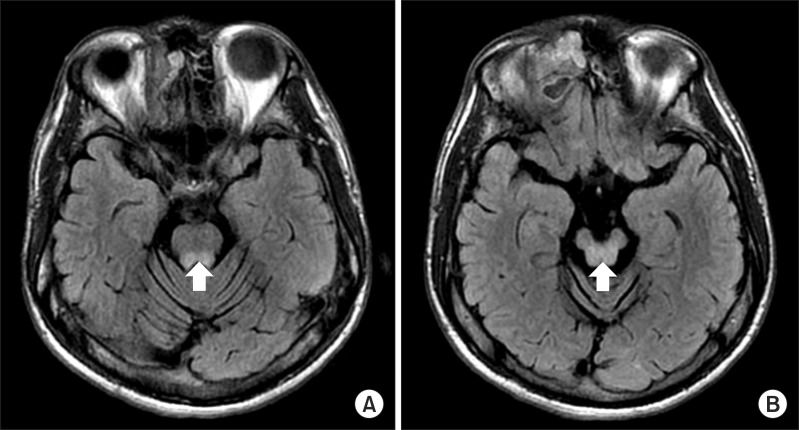Ann Rehabil Med.
2012 Jun;36(3):409-413. 10.5535/arm.2012.36.3.409.
Neuromuscular Electrical Stimulation Therapy for Dysphagia Caused by Wilson's Disease
- Affiliations
-
- 1Department of Physical Medicine & Rehabilitation, Seoul Veterans Hospital, Seoul 134-791, Korea. yangmary@naver.com
- 2Gongju Health Center, Gongju 314-756, Korea.
- 3Korea Tourism College Eldercare Center, Icheon 467-745, Korea.
- KMID: 2266749
- DOI: http://doi.org/10.5535/arm.2012.36.3.409
Abstract
- Wilson's disease is an autosomal recessive disorder of abnormal copper metabolism. Although dysphagia is a common complaint of patients with Wilson's disease and pneumonia is an important cause of death in these patients, management of swallowing function has rarely been reported in the context of Wilson's disease. Hence, we report a case of Wilson's disease presenting with dysphagia. A 33-year-old man visited our hospital with a complaint of difficulty in swallowing, since about last 7 years and which had worsened since the last 2-3 months. He was diagnosed with Wilson's disease about 13 years ago. On the initial VFSS, reduced hyoid bone movement, impaired epiglottic movement and moderate amount of residue in the valleculae during the pharyngeal phase were noted. After 10 sessions of neuromuscular electrical stimulation for 1 hour per day, decreased amount of residue was observed in the valleculae during the pharyngeal phase on the follow-up VFSS.
MeSH Terms
Figure
Reference
-
1. Hankey GJ, Wardlaw JM. Clinical neurology. 2008. 1st ed. London: Manson publishing;p. 157–161.2. Gulyas AE, Salazar-Grueso EF. Pharyngeal dysmotility in a patient with Wilson's disease. Dysphagia. 1988; 2:230–234. PMID: 3251700.
Article3. Paik NJ, Kim IS, Kim JH, Oh BM, Han TR. Clinical validity of the functional dysphagia scale based on videofluoroscopic swallowing study. J Korean Acad Rehabil Med. 2005; 29:43–49.4. Kang BS, Oh BM, Kim IS, Chung SG, Kim SJ, Han TR. Influence of aging on movement of the hyoid bone and epiglottis during normal swallowing: a motion analysis. Gerontology. 2010; 56:474–482. PMID: 20068282.
Article5. Da Silva-Júnior FP, Carrasco AE, Da Silva Mendes AM, Lopes AJ, Nobre E Souza MA, De Bruin VM. Swallowing dysfunction in Wilson's disease: a scintigraphic study. Neurogastroenterol Motil. 2008; 20:285–290. PMID: 18036136.
Article6. Pfeiffer RF. Gastrointestinal dysfunction in Parkinson's disease. Parkinsonism Relat Disord. 2011; 17:10–11. PMID: 20829091.
Article7. Logemann JA. The effects of VitalStim on clinical and research thinking in dysphagia. Dysphagia. 2007; 22:11–12. PMID: 17216392.
Article8. Langdon C, Blacker D. Dysphagia in stroke: a new solution. Stroke Res Treat. 2010; 30:6–11.
Article
- Full Text Links
- Actions
-
Cited
- CITED
-
- Close
- Share
- Similar articles
-
- Neuromuscular Electrical Stimulation for Dysphagia
- Dysphagia in Wilson’s Disease: A Case Report of One-Year Follow-Up
- Effect of the Dysphagia Therapy Child with Nemaline Myopathy Who Have Dysphagia: A Single Subject Research Design
- Evidence Based Review of Neuromuscular Electrical Stimulation for Swallowing
- Neuromuscular Electrical Stimulation Therapy for Patients with Chronic Dysphagia Caused by Stroke



